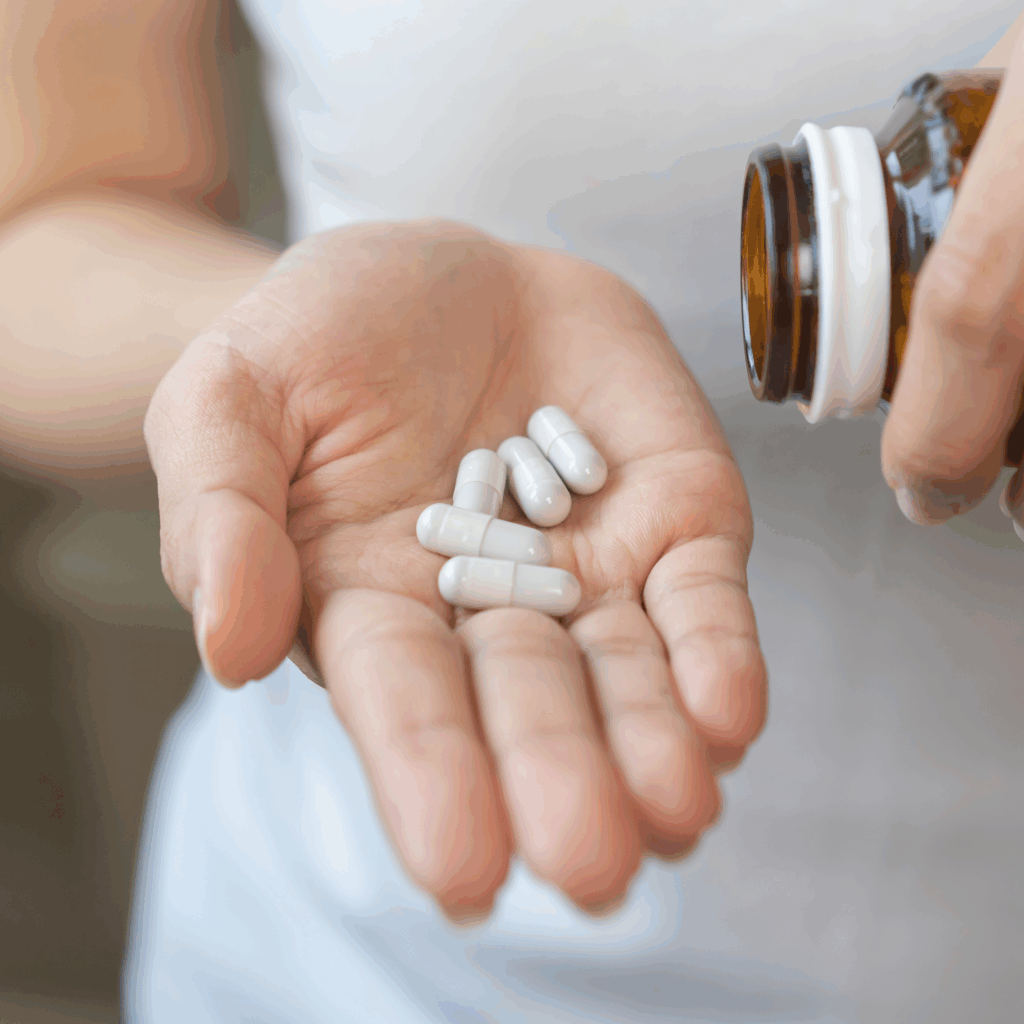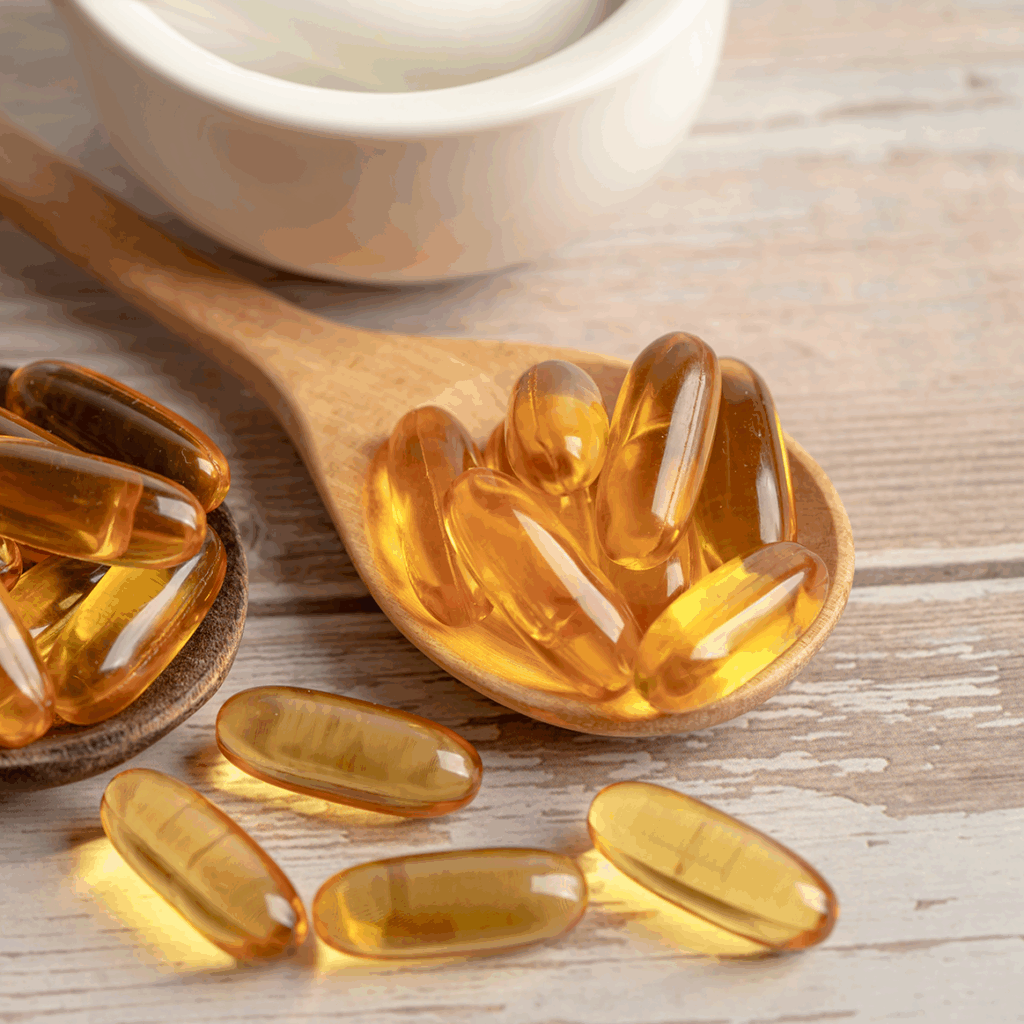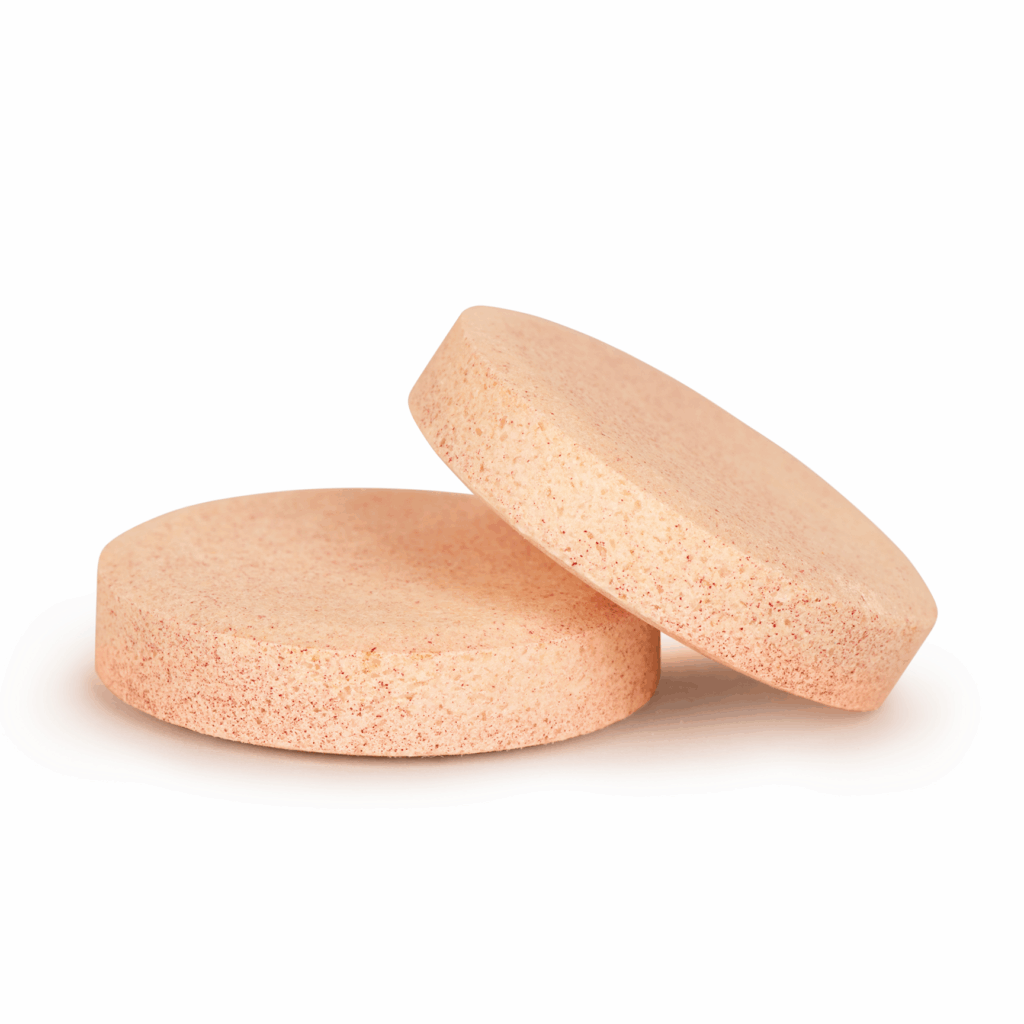Dietary Supplement Forms: Understanding the Pros, Cons, and Myths
Those taking control of their health and making dietary changes have likely considered dietary supplements to improve nutritional intake. With over 94% of Americans reporting multiple deficiencies, individuals are turning to dietary supplements to address the lack of nutrients from modern diets.1
As defined by the FDA, supplements are “products intended for ingestion that, among other requirements, contain a “dietary ingredient(s)” intended to supplement the diet”.2 These can include vitamins, minerals, herbs, and botanicals, and other substances that are part of the food supply, like enzymes and microbials (probiotics). 2
Dietary supplements can also contain other ingredients in small amounts, including fillers, binders, excipients, preservatives, flavorings, and sweeteners.2 Dietary supplements can be found in multiple forms including capsules, gummies, soft gels, liquids, powders, and tablets.
In the following sections, we’ll differentiate the differences between dietary supplement forms that are commonly offered by supplement companies.
Overview of Common Supplement Forms
Tablets

Tablets are powdered ingredients compressed into a solid form. They are the most common and convenient form of supplements. In some cases, liquids, such as juices, are dehydrated and compressed into tablets with the assistance of excipients like honey. This can provide an easier delivery format. Compared with other forms of supplements, tablets are lower cost, easier to store, allow for standardized dosing and last longer due to lack of water content.
Some tablets are coated to help deliver nutritional components to specific organ systems. An example is a tablet intended for gastrointestinal support formulated with an enteric coating. Enteric coatings help tablets and their nutrients survive the acidic GI environment, allowing them to reach the small intestine where the coating dissolves and the ingredients are absorbed.
One of the most common misconceptions regarding tablets is they are hard to digest. There will always be exceptions when products are not manufactured to quality standards, but research has advanced the industry’s understanding of manufacturing practices, and modern tablets are designed to disintegrate quite efficiently.
Key takeaway – Tablets are ideal for individuals looking for smaller formatting, easy storage, cost effectiveness, precise dosing, and longer shelf life.
Capsules

Capsules encapsulate nutrients within a ‘shell’, generally, sourced from gelatin (bovine or porcine), – or cellulose, which is ideal for vegetarians. Capsules are commonly filled with powder or liquid ingredients.
Capsules are unique in that they provide protection against heat, light, and microbial growth. The protective shell is oftentimes the first line of defense against environmental exposures. As an additional benefit capsules are manufactured with less excipients. While excipients are not harmful, some might prefer to consume less of them. Generally, capsules contain ‘dietary ingredient(s)’, the shell, and an excipient to help aid in manufacturing.
Additionally, for those who have difficulty with unpleasant taste or odor from tablets or powders, capsules can help mask these. Some individuals have trouble, or an inability, swallowing tablets. In these cases, capsules provide an alternative because they are generally easier to swallow but can be opened to sprinkle contents onto food. Finally, capsules may provide faster absorption time as compared to other supplement delivery forms.
Key takeaway – Capsules are ideal for individuals who prefer tasteless delivery formats, fewer excipients, and ease of use.
Soft Gels

Soft gels are soft, sealed flexible shells filled with liquid or oil-based supplements. Supplement companies commonly encapsulate fish oil or omega-based supplements within a soft gel.
One of the benefits behind a soft gel delivery format is the ability to deliver fat-soluble nutrients. For example, Vitamin A is a fat-soluble nutrient that requires dietary fats for optimal absorption. Therefore, a soft gel can contain flax oil as dietary fat to deliver and absorb Vitamin A.
Soft gels are ideal for those struggling with swallowing capsules or tablets. While soft gels are generally the same size, if not smaller than capsules, they can be ‘popped’ open in the mouth to consume liquid contents rather than swallowing the soft gel. Additionally, soft gels are ideal for those looking for high nutrient digestibility, as liquid forms can be absorbed more readily.
Key takeaway – Soft gels are ideal for those looking for high bioavailability, easy delivery format, and convenient fat-soluble nutrients.
Gummies

Gummy supplements are chewable, flavored, gelatin-based delivery formats, like the gummy bears loved by kids, delivering vitamins, minerals, and other dietary compounds. Gummy supplements have become increasingly popular in recent years as they appeal to adults and children alike. Gummy supplements will commonly be found formulated with vitamin D, vitamin C, magnesium, melatonin, or multivitamins.
Despite the convenience of gummy supplements, they come with multiple downsides. Gummies can be high in added sugar, with some delivering up to 8 grams of sugar per 1 gummy. By consuming one gummy vitamin, they supply one-third of dietary recommendation for added sugar per day, which is 100 calories, or around 24 grams. Additionally, the added sugar content of one gummy alone could spike blood sugar levels.
Further, nutrients might not be as bioavailable as compared with other forms of dietary supplements. For individuals looking to consume dietary ingredients in higher quantities, gummy supplements are not ideal. Generally, it would take multiple gummies to achieve a desired dosage. In some cases, individuals would need to consume one-fourth of a bottle of gummy supplements to reach recommended nutrient levels.
With certain vitamins, like Vitamin C, they can degrade when exposed to heat. Gummies require high temperatures to activate gelatin, and often nutrients are added when the liquid solution is hot, before the gelatin solidifies. This could result in degradation of nutrients before the gummy hits the shelf.
Gummy supplements are often targeted towards children or pediatric populations; notice the fun colors and cute designs. The colors used in gummies often include Red 40, Blue 1, Yellow 5, and Green 3. These artificial colorings are lab-derived and sourced from petroleum, meaning they are not naturally occurring. They are linked to a multitude of health concerns, including hyperactivity, cancer, and obesity.3
In addition to artificial colorings, gummies contain artificial flavorings. Artificial flavorings are derived in labs from over 700 FDA-allowed flavoring chemicals or additives known as “Generally Recognized as Safe”. Additionally, there are over 2,000 chemicals not directly regulated by the FDA but still approved for use in artificial flavorings. There are limited clinical studies on artificial flavorings, however, most indicate an increased risk of obesity, cravings for refined sugar, and dietary overconsumption.4
Key takeaway – Gummy supplements are ideal for ease of use, for those who cannot or feel uncomfortable swallowing pills, and children who are particular about taking supplements. In situations where gummy vitamins are chosen, check the ingredients list, reach out to the company for testing on efficacy, or choose to make them at home!
Powders

Powdered supplements are nutrients in a dry form composed of fine particulates. Examples of common dietary powder supplements include fiber, protein powders, greens powder, inositol, and calcium.
Powders are an ideal option for individuals who prefer integrating supplements into their daily routine. They are easily added to smoothies, soups, juice, water, yogurt, or other liquids.
There are additional benefits to incorporating powders into a daily dietary routine. Powders, like protein powder, provide bulk to smoothies and protein to help with satiety. Additionally, powders can be individually tailored for specific needs. For example, for those lacking dietary fiber, they can add fiber to a smoothie to help reach the recommended 14 grams per 1,000 calories.
Although powders are convenient for most, some might find powdered supplements to be too grainy or unpalatable. Powders might be inconvenient for those with busy schedules as compared with grab and go options, like capsules or tablets.
Key takeaway – Powders are ideal options for those who integrate supplements into their dietary regimen or need some extra boost in nutritional intake. For those uncomfortable with swallowing tablets or capsules, powders provide an alternative option to optimize nutrient intake.
Liquids

Liquid supplements generally contain fat soluble vitamins or herbs in a liquid base. The supplement itself is composed of dietary ingredients and additional ingredients like water, alcohol, glycerin, vinegar, or oil-based components to support the extraction and delivery of nutrients.
More often liquids, like tinctures or concentrates, contain herbs in an alcohol base. Liquid herbal concentrates prepared in alcohol retain more nutrients and are highly concentrated as compared with herbal concentrates extracted from water. As an additional benefit to alcohol extraction, the properties of herbal preparation will enhance with aging, rather than decrease.5
For those concerned about alcohol intake when supplementing with liquid herbs, the common dose of 5 mL is not a dose that can overload the alcohol metabolizing capacity of the liver in healthy individuals.6 The 5 mL recommendation contains as much ethanol as one-sixth a glass of beer or wine, and is rapidly metabolized by the liver.
Similar to soft gels, liquid supplements can provide fat soluble vitamins. Vitamin D is commonly marketed as a higher-dose liquid in a fat-base. By infusing vitamin D in the fat-base, the vitamin becomes more bioavailable and absorbable by the body because it is being consumed with the fatty acids required to facilitate optimal absorption. For those with dietary fat deficiencies, liquids provide an easy delivery system. Due to the delivery mechanism, liquid supplements are considered to benefit those looking for repletion of deficiencies more efficiently.
For children, liquid supplements might be an ideal alternative to capsules or tablets but still provide the ‘fun’ aspect like gummy vitamins. Additionally, liquid supplements have been used topically to enhance healing or promote skin health.
Key Takeaways – Liquid supplements are ideal for those looking for herbal preparations in a long-lasting, effective dosage. Those looking for supplements with an easy delivery method, fat-soluble vitamins, and for children or adults who don’t like swallowing capsules or tablets, liquid supplements can be a good option.
Wafers

Wafers are a similar concept to gummy vitamins in terms of delivery method. Wafers are thin, often circular, chewable tablets which are flavored and easy to consume. Wafers are often composed of whole food ingredients and can be formulated to contain more nutritional content.
For those uncomfortable with swallowing tablets or capsules, wafers provide an alternative delivery form. Wafers are appealing to children as they provide a fun, alternative delivery method that often tastes better than liquids or powders.
Additionally, wafers do not require high heat or sugar content to be formulated, so consumers can rest assured the nutritional content remains viable during manufacturing. As wafers can be composed of whole food ingredients, they are often flavored with freeze-dried fruit powder or dried juice extracts. These flavorings add small amounts of nutrients to the overall product but allow for an appealing taste and better texture.
While wafers and chewable supplements are appealing to some, others find them challenging due to a chalky texture accompanying the formulation. Further, chewing wafers can be challenging, like in cases where children don’t have all their teeth, or adult teeth. For those with dental issues or braces, wafers may not be advised.
The development of wafers requires careful formulation to ensure the dosage is consistent across batches. While some companies take care to ensure this process is done effectively, other mass-produced wafers with minimal quality control and are often lacking in nutrient composition. It is important to reach out to supplement companies and inquire about their quality control standards for manufacturing unconventional products, like wafers.
Key takeaway – Wafers and chewables are great options for those looking for nutrient delivery in a chewable form that, generally, do not contain artificial flavorings or colors.
Special Considerations in Supplement Form Selection
Whole Food Ingredients and Supplement Size

There is an abundance of dietary supplement delivery forms to consider and a wide array of nutrient forms. In most cases, individuals are opting towards choosing whole food ingredients to promote synergy between diet and supplementation.
Whole food ingredients are simple: they are whole foods added to supplements. Whole food ingredients provide added nutritional value from food sources most individuals do not normally consume.
For example, the average American does not consume sardines on a regular basis, but sardine intake can meet almost one hundred percent of the recommended daily Omega-3 intake. They are also a great source of protein, vitamin B12, vitamin D, and calcium. Another example is bovine liver. Liver is one of the highest, naturally occurring sources of B12. However, most people do not want to consume a tin of sardines and liver each day.
The addition of whole food ingredients to supplements promotes nutrient value and diversity. Whole food ingredients can be paired with isolated nutrients to promote bioavailability and absorbability, or they can be used alone in a supplement to provide nutrients. For example, a B12 supplement with isolated methylcobalamin can be combined with dried, bovine liver to provide a ‘full spectrum’ B12 supplement. Nutrients are derived from an isolated form to help replete deficiencies in the body but also provided from food sources to promote synergy and optimal absorption from food sources to promote synergy for nutrient absorption.
When using whole food ingredients, some companies may increase serving sizes to meet nutritional needs. Whole food ingredients are not as concentrated as synthetic forms, requiring a higher serving size to meet nutritional demands. For some, the higher serving sizes for accompanying whole food supplements might be unappealing.
Key takeaway – Whole food ingredients provide the benefit of tailored supplements that can help optimize nutrition content through higher bioavailability, synergistic compatibility, and providing the whole food matrix where isolated nutrients are naturally found.
Dispelling Myths About Tableting
While tablets are the most used dietary supplement, it is not without controversy. Below is two of the most common myths surrounding tablet supplements –
- MYTH: “Tablets are less natural”
- This is false. Some tablets are fully composed of whole food ingredients with no synthetic ingredients in the formula. Tablets are simply compressed dietary ingredients; this does not make them less natural.
- MYTH: “It is difficult to digest tablets”
- There are currently no clinical trials demonstrating tablets are difficult to digest or inferior for providing supplemental nutrients. This is a false claim.
In this case, it is more important to consider the quality of the ingredients in the supplement than being concerned about which form is more bioavailable.
Dispelling Myths About Excipients

As individuals become conscious of dietary quality and ingredients, they’ll encounter discussions of inactive ingredients. Inactive ingredients, otherwise known as excipients. Excipients have come under scrutiny in recent years due to concerns regarding safety and validity of use. Excipients include binders, fillers, and processing aids. While some companies will use excipients to “bulk” their products, others utilize excipients to aid in manufacturing, producing, and optimizing nutrient quality.
The purpose of excipients in supplements is to ensure stability, potency and safety of dietary supplements. Some excipients are unnecessary, like high fructose corn syrup, and do not add any benefit to the product. High fructose corn syrup can be harmful as it has been linked to multiple chronic health conditions.
In contrast, magnesium stearate is not harmful. Magnesium stearate is used as a lubricant in the tableting process to aid in manufacturing. When digested, it dissociates into magnesium ions and stearic acid, which enter normal physiological processes in the body. Magnesium stearate does not contribute significantly to the quantifiable magnesium in a product; it might add unsignificant amounts, but it is not used to promote magnesium quantity.
Always reach out to supplement companies to ask about their excipient sourcing and reason for use. Companies with quality assurance standards will be open to providing answers and educating on excipients’ purpose.
Conclusion
Dietary supplements are intended to supplement your diet by promoting nutrient quality and density. There is an abundance of dietary supplement forms to choose from including tablets, capsules, liquids, powders, wafers, gummies, and soft gels. It can be difficult to understand which form would be ideal for certain individuals, so it is important to consult with a healthcare provider for guidance, especially for specific health concerns or anyone on medications.
Dietary supplements are intended to be unique to an individual’s needs and nutritional requirements. It is important to understand the purpose of the supplement and how it will provide benefit. For questions regarding supplement choices, reach out to the supplement company and talk to their support team to inquire about forms and quality assurance testing.
Did you know Wholistic Matters is powered by Standard Process? Learn more about Standard Process’ whole food-based nutrition philosophy.
- Office of Disease Prevention and Health Promotion. (2015). Scientific Report of the 2015 Dietary Guidelines Advisory Committee. https://odphp.health.gov/our-work/nutrition-physical-activity/dietary-guidelines/previous-dietary-guidelines/2015/advisory-report
- Food and Drug Administration. (2024). Questions and Answers on Dietary Supplements. https://www.fda.gov/food/information-consumers-using-dietary-supplements/questions-and-answers-dietary-supplements#:~:text=A%20dietary%20supplement%20is%20a,intended%20to%20supplement%20the%20diet.
- Center for Science in the Public Interest. (2022). Artificial Colorings (Synthetic Food Dyes). https://www.cspinet.org/article/artificial-colorings-synthetic-food-dyes
- Andrews, D. (2024). Synthetic Ingredients in Natural Flavors and Natural Flavors in Artificial Flavors. Environmental Working Group. https://www.ewg.org/foodscores/content/natural-vs-artificial-flavors/
- Esterik, P. V. (1998). To Strengthen and Refresh: Herbal Therapy in Southeast Asia. Social Science & Medicine, 27(8), 751-759.
- Bone K. MediHerb Modern Phytotherapist 1997, Volume 3, No. 2 pp 8- 10.







